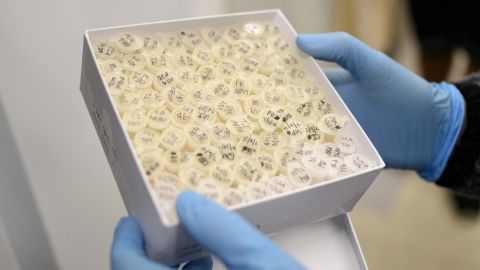Polio is back — how concerned should Americans be?
CNN
—
New York’s governor has declared a state of emergency after health officials detected poliovirus in the wastewater of five counties – evidence the disease is circulating. The declaration also follows a report from the US Centers for Disease Control and Prevention of an unvaccinated person in Rockland County, New York, who was diagnosed with paralytic polio this summer – the first case identified in the United States in nearly a decade.
Understandably, these events have sparked a lot of questions: Why does one case of polio worry officials? What does it mean to find poliovirus in wastewater? Who should be worried about contracting the disease? If someone had the vaccine years ago, are they still protected now?
To understand more about this disease, which most people alive today have never experienced, I spoke with CNN Medical Analyst Dr. Leana Wen, an emergency physician and professor of health policy and management at the George Washington University Milken Institute School of Public Health. She is also author of “Lifelines: A Doctor’s Journey in the Fight for Public Health.”
CNN: So far, there has been only one documented case of paralysis due to poliovirus in New York. Why does one case worry health officials?

Dr. Leana Wen: An August report from the CDC said that “even a single case of paralytic polio represents a public health emergency in the United States.” This is for two main reasons.
First, polio is a disease with the potential for very severe consequences. During its peak in the 1940s and 1950s, polio resulted in tens of thousands of children becoming paralyzed every year. Thousands died from the virus.
This changed with the introduction of vaccines that are highly effective – more than 99% effective at protecting against paralytic polio. Thanks to massive vaccination campaigns, the last incidence of wild-type polio occurred in 1979 – and it had been considered to be eliminated in the United States. The reemergence of such a disease, which can have such serious impacts, is a major threat.
Second, the one case of paralytic polio may be the tip of a large iceberg. Most cases of polio infection are asymptomatic and do not cause paralysis. Symptoms – which can include fatigue, fever and diarrhea – tend to be mild and can resemble those of other viruses. Public health officials are worried there are many other people who may be infected with polio and could be transmitting it unknowingly.
This is particularly concerning because Rockland County, where the recent paralytic case of the virus was diagnosed, has a polio vaccination rate of just 60%. In some parts of the county, the vaccination rate is as low as 37%. These numbers are far below the threshold needed for herd immunity, and that means there are a lot of individuals in the area who are vulnerable to polio infection and potential severe outcomes.
CNN: What does it mean that poliovirus has been detected in the wastewater of five counties, including New York City?
Wen: Finding poliovirus in sewage means one of two things: That there are people actively infected with polio who are shedding the virus, or that the virus signal could be from people who recently received the oral polio vaccine (OPV). OPV is no longer given in the United States – since 2000, the version used in the US is the inactivated polio vaccine (IPV), which is injected – but other countries are still using OPV, and it’s possible that travelers from those places are shedding virus from the vaccine.

In rare circumstances, the weakened virus from people who just received OPV could cause paralytic polio in unvaccinated individuals – which is a major reason why OPV is no longer used in the US.
One additional point of concern is that a wastewater sample from Nassau County on Long Island has been genetically linked to the paralytic polio case identified in Rockland County. (The two counties are not adjacent, rather approximately 40 miles apart.) This is further evidence of community spread that’s going largely undetected.
CNN: How can people contract polio?
Wen: Polio is an infectious disease that can be transmitted in a number of ways. A primary route is fecal-oral, meaning someone could get polio if they come into contact with feces from an infected person. This could occur, especially in children, through putting objects like toys that have been contaminated with feces into the mouth.
Poliovirus could also be transmitted through the respiratory route – for example, if someone who is infected coughs or sneezes and those droplets…
Read More: Polio is back — how concerned should Americans be?

